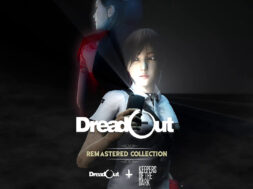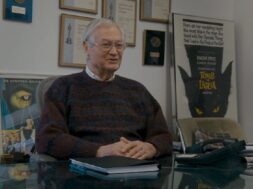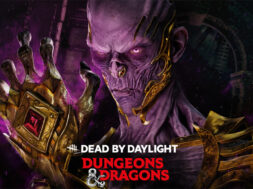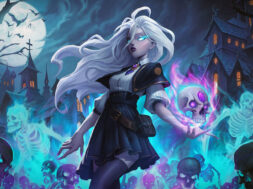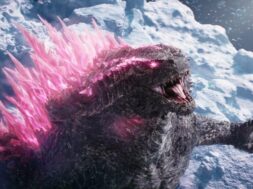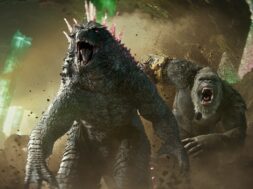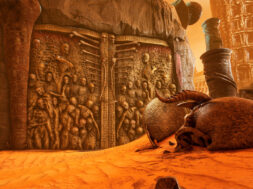Hideo Kojima’s Death Stranding is one of the most heavily anticipated video games of our time. The trailers, depicting a cold science fiction atmosphere, have captivated gamers around the world. Kojima has yet to open up much to specific narrative details, but the trailers do provide hints regarding the game’s themes. Having been a Kojima fan for many years, I’ve spent a great deal of time piecing together clues in these cinematics to understand Death Stranding better.
What I’ve done here is compiled my notes to present what I believe are Death Stranding‘s major themes, as well as what they could mean for the game as a whole. Please keep in mind these notes, while based on imagery and terms found via game footage (including interviews with Kojima), are all speculation. These notes are meant to be more of a fun analysis of my understanding of Death Stranding.
So without further ado, let’s dive right in.
The Link Between Life & Death

Kojima has shared that one of the big ideas in Death Stranding is the connection between life and death.
The game’s title points to this connection, with visual clues in the first trailer. In trailer one, the camera pans over dead aquatic life. We see crabs and whales beached onto a shore. The game’s name, “Death Stranding,” is a reference to “cetacean stranding;” this is an act common among whales and dolphins where they purposely beach themselves. There is no official cause for why the creatures do this. Some scientists believe it could be environmental reasons, while some believe it is an act of “social cohesion” (regarding when numerous animals beach themselves); in the case of toothed whales, its distress call may attract the rest of its pod, with said pod also beaching themselves, so the lone whale does not suffer alone. It’s with this in mind that “Death Stranding” takes on a dual meaning; it both references this beaching phenomenon and speaks to Kojima’s overall concept of connectivity.
Speaking to the themes in Kojima’s work, game journalist Geoff Keighley mentions in one interview that, Kojima’s games (including Death Stranding), are deep regarding time, space, and family; I feel Keighley’s comments are more about the ideas within Death Stranding. In trailer four, we see a photo of a family; family is a major component in human connectivity, and gives us another point to consider when Kojima speaks to Death Stranding’s emphasis on bonds.
What’s also just as interesting, are the hints pointing to the online interaction that could be part of Death Stranding. It’s possible for the game to have some form of online community interaction, seeing how P.T. utilized it so well. Through P.T., Kojima was able to see gamers come together and work towards figuring out narrative puzzles. Given this intriguing level of meta gameplay, it will be fascinating to see how Kojima intends on connecting players to one another (in what appears to be a predominantly single player experience).
Kojima has brought up the influence of a short story written by Kōbō Abe as well. In his story, The Man Who Turned into a Stick, it’s stated that humankind’s tools are the stick and the rope; the former is meant to push away threats, while the latter is used to bring what’s important to someone closer. This story alludes to how players will be able to interact within the game’s world, whether they decide to engage in aggression or another means. But how will these concepts of connectivity work into Death Stranding? With the release of the fourth trailer, one thing has been made clear regarding the game mechanics and other significant themes at work – that being the concepts of space and time.
Among the other details confirmed in Death Stranding is its death mechanic; upon death, Sam (the game’s protagonist), will reappear in an underwater world, working himself back into the world of the living. When he does return to the living world, any changes he has made will still exist. We see this take place for the first time in trailer three after Sam encounters a massive alien being. Kojima has also confirmed that upon death, players will have the chance to roam outside their bodies and explore this underwater space. Well before this was confirmed, however, fans discovered that the dog tags Sam has been seen wearing contain equations related to quantum physics.
Quantum Physics/Time & Space

Quantum physics, of course, speaks to many concepts regarding time and space; in popular fiction, the conversation tends to revolve around alternate realities (e.g., Donnie Darko). When it comes to talking about death, some scientific conversations say that our minds may enter another state of consciousness or reality; with Sam being transported back into the world upon death, that sequence sounds like it is referencing this ideology.
In trailer four, there is a line of dialogue that speaks to the death mechanic. Off-screen, a voice tells Sam that if he is eaten by one of the creatures, he will come back, but that the crater will still be there. I assume that this person is speaking to the crater we’ve seen from trailer three.
So far we do know of a couple of important details regarding how time will impact the game. There’s the “Timefall,” a rain that’s shown to speed up the growth and death of whatever it touches. There’s also how time may impact what items we can use in the game. In the second trailer where Mads Mikkelsen makes his appearance, he is the only one with “modern day” weaponry; the rest of his team is handling older rifles. Depending on how time is manipulated, this could mean allowing players access to a variety of weapons across different eras.
Then there’s that of the game’s otherworldly creatures. Given what we’ve been able to see in the cinematics, it’s fair to speculate that they are not natural to Sam’s world. For one, they cannot be detected by normal means (with individuals having to use a radar system and the baby). There’s also the means in which Sam interacts with these creatures; if you listen closely too what Léa Seydoux’s character says in trailer four, she points out that Sam has “chiral allergies.” At another point, a voice off screen mentions “chiralium density” to Sam.
Chirality is a property of asymmetry important in several branches of science. If an object happens to be chiral, it means that it is distinguishable from its mirror image, and it cannot be superposed onto it. Regarding the comment made of Sam’s “chiral allergies,” it would appear that he is not only allergic to the touch of these creatures, but he may be allergic because of the chirality of their form. What this makes me think is that he has a reaction to touch, which plays into the game’s theme of connecting with people. It is not confirmed yet if this allergic reaction happens when interacting with humans.
Trailer four comes with a couple of taglines that speak to the concept of connectivity. One common subject in science is that there are infinite universes, all where there is a different version of you; could Kojima be teasing a cosmic connection? With the death mechanic that brings Sam back into the game, how will that challenge our perceptions of life?
Connecting The Strands

There are lots of thematic and narrative points that are still unknown and would take us hours, if not days, to comb through.
What can we piece together then from these ideas? When looking at these themes of life and death, quantum physics, and the subject of connectivity, I believe that Death Stranding is going to be a reflection of humankind’s distance towards one another, as well as the need to make intimate connections.
Unlike a lot of other theorists out there, I’m not someone who has ever thought Death Stranding is secretly a Metal Gear game or has anything to do with the series; but I will say this about the tie that exists between Metal Gear and Death Stranding: their creator.
If you’ve played enough Metal Gear games, you will know Kojima has made efforts throughout his work to speak to the horrors of war. Government conspiracies, technological anxieties, and the lingering aftermath of violence are all themes you can find throughout the Metal Gear games. It looks like Death Stranding is set in an alternate reality of our world; we know that the company Sam works for, Bridges, is part of the United Cities of America (rather than states). Perhaps the creatures, along with the crater in trailer three, are an allegory for humankind’s violence in a world where conflicts continue to arise.
From what we’ve seen so far, the world of Death Stranding is bleak. The world is desolate, full of these otherworldly creatures where it’s better to kill yourself rather than be captured (as seen in trailer three). There’s a military component at work in the story, given the inclusion of the soldiers and tanks from trailer two. Referring back to the cetacean stranding concept, there’s also an element of Death Stranding that touches upon environmental issues; so much of the imagery seen involves an oily substance, as well as rain that can alter time and dying animals.
Kojima’s games have always contained worldly themes in them; from these cinematics alone and the hints passed our way, it wouldn’t be a shocker if Kojima is aiming to convey a story about humanity’s ever-growing distance and violence towards one another. Maybe Death Stranding is not just about attempting to connect us as players, but learning how to connect as individuals.
If this theory were to be the case, it makes me consider the importance of the baby. People believe that children look at the world in hope; that because they are so young, they are not tainted by the horrors of life. The baby in Death Stranding has a major narrative significance of course, but what if it’s also a vehicle to convey how we should look at the world? How we can find opportunity in taking the time to connect and add more positivity to the world. What if the baby can see these creatures (allegories for humankind’s violence) because its view of life is still optimistic?
Again, all my thoughts are pure speculation based off the trailers and some of Kojima’s interviews from the past few years. Perhaps you found a concept in here that was also on your mind, or maybe you discovered an idea you hadn’t considered before. One thing is for sure – Death Stranding is one of the most talked about works in recent gaming history; whatever it has in store for us is sure to provide a captivating, existential experience.
What are your thoughts on Death Stranding’s themes?
